The 25 best horror movies since 2000
As Halloween approaches, let’s revisit The Babadook, The Ring, and more movies that made the new millennium a renaissance period for scary movies
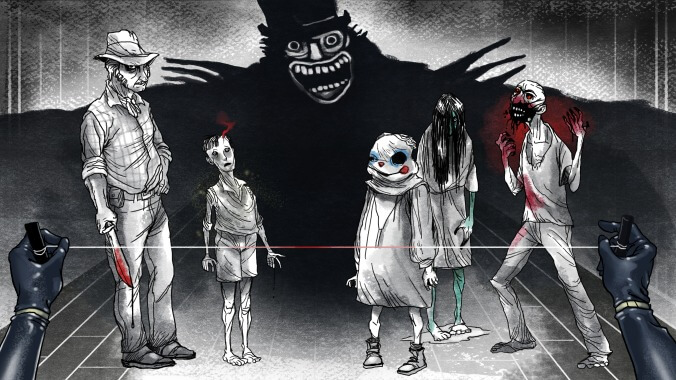
This story was originally published on October 26, 2015.
Ask horror-movie buffs to name their favorite decade for the genre, and you’ll likely receive a variety of answers. The ’30s had several of Universal’s classic roster of monsters. The ’40s had Val Lewton. The ’70s had zombies, and giant sharks, and Texas chain saw massacres. (The ’70s is a good choice.) But at the risk of speculating wildly, it seems safe to assume that not too many hypothetical fans would single out the current or previous decade as horror’s finest. Classics take time to solidify, reputations take a minute to build, and hindsight is 20/20. Plus, you know, Uwe Boll.
But looking over the 25 films ranked below, all of which opened in the United States sometime before today and after January 1, 2000, it’s possible to imagine a future when the turn of the new millennium will be thought as a renaissance period for scary movies. Perhaps more than any other genre, horror operates as a mirror of our anxieties—a warped reflection of everything that’s eating away at us as a culture or keeping us all up at night. And there’s been plenty to lose sleep over these past 15 years, from social and environmental instability to terrorism (and the war against it) to that few months everybody was freaking out about SARS. The list below could easily double as a guide to the fears and phobias of modern life. Its eclecticism is a testament to just how many different ways we’ve been freaked out since Y2K.
Sixteen contributors submitted ranked ballots of their favorite horror movies released in the United States since the year 2000, including a few that opened internationally before then. These are not the scariest films of our new millennium, but simply the greatest that happen to occupy the horror genre. As such, we tried to be fairly strict with the definition; films that feel like horror but wouldn’t necessarily be classified as such by IMDB or Netflix—like David Lynch’s two post-2000 magnum opuses, or Pan’s Labyrinth, or Requiem For A Dream—were excluded. (The only film that would have made the list had it not been deemed ineligible after ballots came in was Under The Skin—and even then, just barely.) Conversely, we felt little need to inclusively cater to the major horror trends of the period: Just as it’s possible to love ’80s horror without loving a single slasher movie, one can appreciate where the genre has gone these past 15 years without citing the Saw series, defending the endless string of modern Exorcist clones, or apologizing for the ongoing found-footage movement. If you’re looking for some excellent Halloween watches this week, this list is a great place to start.
How many of our top 25 have you seen? What would your ballot look like? Did we miss anything crucial? Sound off in the comments.
Updated October 2021 with where these films are available to stream.

This story was originally published on October 26, 2015.Ask horror-movie buffs to name their favorite decade for the genre, and you’ll likely receive a variety of answers. The ’30s had several of Universal’s classic roster of monsters. The ’40s had Val Lewton. The ’70s had zombies, and giant sharks, and Texas chain saw massacres. (The ’70s is a good choice.) But at the risk of speculating wildly, it seems safe to assume that not too many hypothetical fans would single out the current or previous decade as horror’s finest. Classics take time to solidify, reputations take a minute to build, and hindsight is 20/20. Plus, you know, Uwe Boll.But looking over the 25 films ranked below, all of which opened in the United States sometime before today and after January 1, 2000, it’s possible to imagine a future when the turn of the new millennium will be thought as a renaissance period for scary movies. Perhaps more than any other genre, horror operates as a mirror of our anxieties—a warped reflection of everything that’s eating away at us as a culture or keeping us all up at night. And there’s been plenty to lose sleep over these past 15 years, from social and environmental instability to terrorism (and the war against it) to that few months everybody was freaking out about SARS. The list below could easily double as a guide to the fears and phobias of modern life. Its eclecticism is a testament to just how many different ways we’ve been freaked out since Y2K.Sixteen contributors submitted ranked ballots of their favorite horror movies released in the United States since the year 2000, including a few that opened internationally before then. These are not the scariest films of our new millennium, but simply the greatest that happen to occupy the horror genre. As such, we tried to be fairly strict with the definition; films that feel like horror but wouldn’t necessarily be classified as such by IMDB or Netflix—like David Lynch’s two post-2000 , or , or —were excluded. (The only film that would have made the list had it not been deemed ineligible after ballots came in was —and even then, just barely.) Conversely, we felt little need to inclusively cater to the major horror trends of the period: Just as it’s possible to love ’80s horror without loving a single slasher movie, one can appreciate where the genre has gone these past 15 years without citing the Saw series, defending the endless string of modern Exorcist clones, or apologizing for the ongoing found-footage movement. If you’re looking for some excellent Halloween watches this week, this list is a great place to start.How many of our top 25 have you seen? What would your ballot look like? Did we miss anything crucial? Sound off in the comments.Updated October 2021 with where these films are available to stream.
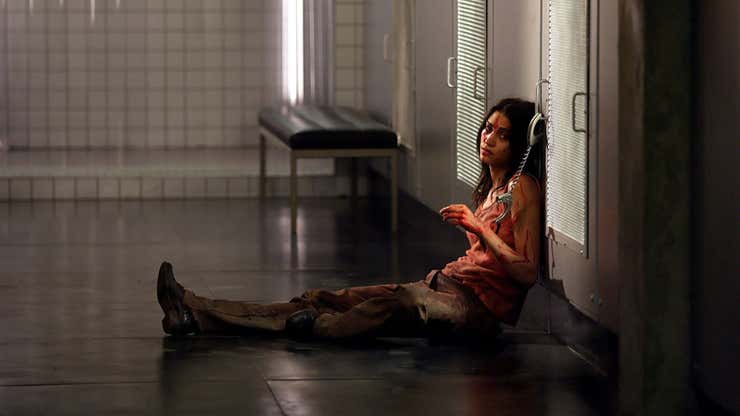
There are those who find Pascal Laugier’s Martyrs to be one of the most unsettling and provocative horror films ever made, and then there are those who haven’t seen it yet. But unlike other extreme horror that relies on shock value and repugnance for its notoriety (, ), Martyrs isn’t particularly grisly, nor does it wallow in depravity for exploitative button-pushing. The film is almost two movies in one. Depicting a fragile young woman’s efforts to support her friend, who seeks revenge for her abuse as a child, the first half is horror at its simplest and most frightening. But a late and unexpected turn in the story pushes things into utterly new territory, at which point the film becomes horrifying for wholly different reasons. It’s difficult, transcendent, riveting, and never anything but nerve-shredding. And the ending is one for the ages. [Alex McLevy]Available to rent on , and to purchase on , , and
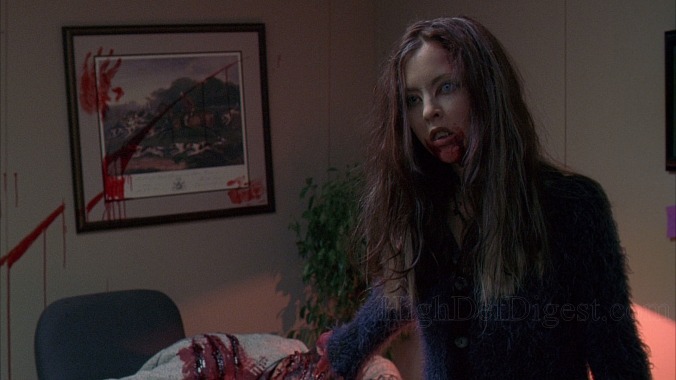
Sex and violence are inextricably intertwined in horror movies; it’s only a slight exaggeration to say that in most slasher films, being disemboweled by a hockey mask-wearing maniac is implicitly posited as an appropriate punishment for extramarital sex, among other transgressions. The genre can be very regressive in its gender politics, if not grotesque and loathsome in its sexism, but the sly Canadian horror-comedy Ginger Snaps cleverly subverts that tradition by positing lycanthropy as an allegory for a girl’s sexual and physical maturation. The film is empowering in its depiction of a world where female sexuality is a potent, violent, and righteous force. And the film inspired a slew of feminist-leaning horror films that addressed gender forthrightly and smartly, including a memorable segment in the horror anthology . [Nathan Rabin]Available to stream for free on , , , , and , and to stream with an , , or subscription, and to rent on and
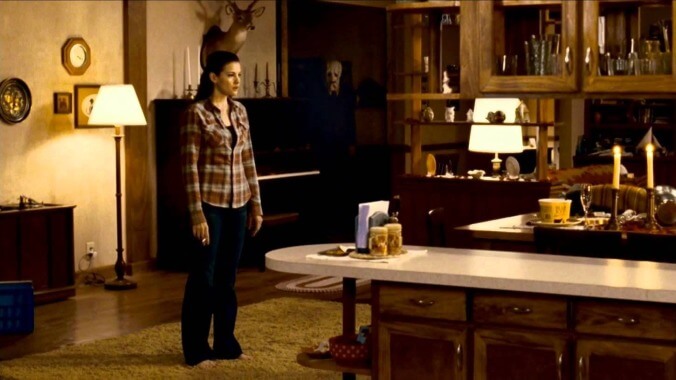
It’s not the threatening villains that make The Strangers potent. The masked assailants trying to gain entry into the vacation home of an unhappy couple (Scott Speedman and Liv Tyler) aren’t particularly memorable; the film’s bare-bones narrative insists upon that anonymity. No, what makes Bryan Bertino’s film seethe with nail-biting tension is the masterful use of space and silence. The home becomes a sieve, a place where a threatening presence can intrude upon the frame from any angle. There are no fancy camera tricks or complicated plot twists, just a slowly building sense of dreadful inevitability. Always hanging back, Bertino lets his two leads stand exposed, the large open spaces behind them always promising to release more terrors. It’s a perfect rejoinder to those who value originality over everything. Going back to basics can reap petrifying rewards, too. [Alex McLevy]Available to stream on , and to rent on , , , and

A rare gothic horror throwback that’s scary and affecting rather than campy, The Others is so well-acted and well-crafted that it works even after viewers know all its secrets. Nicole Kidman gives one of her best performances as a widowed mother named Grace, who lives with her two sickly children in an elegant European country house in the mid-1940s, just post-WWII. The arrival of eccentric new servants coincides with the family’s increased awareness of some kind of inexplicable presence in the manor, which Grace tries her best to ignore until she’s eventually forced by circumstance to investigate. Writer-director Alejandro Amenabar teases out the mystery and uses old-fashioned effects to give viewers the creeps; but his best asset is Kidman, whose dawning awareness of what’s happening around her helps turn The Others into a poetic portrait of soul-sick grief. [Noel Murray]
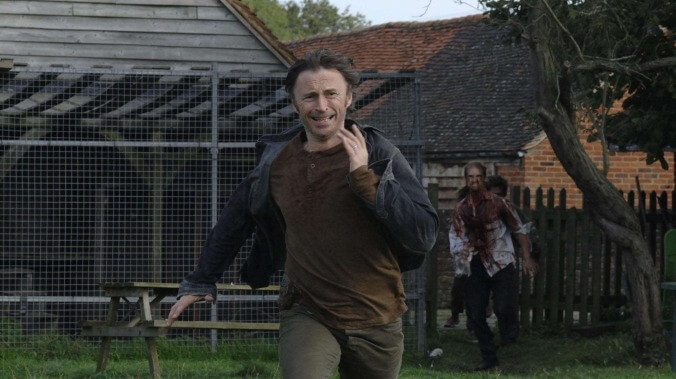
Employing the same shaky DV camerawork as its Danny Boyle helmed-predecessor, this arguably superior sequel from director Juan Carlos Fresnadillo picks up seven months after a global virus transformed much of the world’s population into flesh-eating zombies. Although most of the U.K.’s monsters have now starved to (re)death, and despite the fact that part of London has been successfully turned into a militarized safe zone overseen by the U.S., no one is secure in this horror show. That’s apparent from the film’s masterful intro, wherein a terrified husband (Robert Carlyle) is forced to flee his rural enclave—and abandon his loved ones in order to save himself—and continues once the action shifts to those living under American armed-forces protection, which falters after another undead outbreak. Frantic blasts of cannibalistic action set to squealing guitars generate adrenalized terror, though more chilling still is the overarching allegorical portrait of a United States failing to maintain control over a rabid, rampaging horde of infected-by-madness enemies. [Nick Schager]Available to stream on and to rent on , , , , and
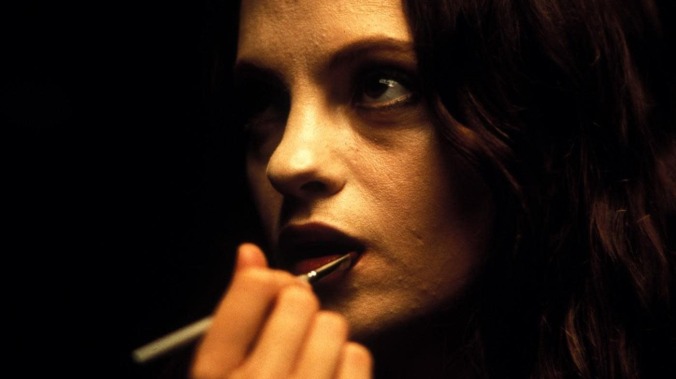
Horror films commonly turn the innocuous into the atrocious, but it takes uncommon skill to make something dreadful out of a cheerfully banal parental pep talk. May (Angela Bettis) navigates her lonely world with her mother’s voice in her head—“If you can’t find a friend, make one”—assuring her that ending her isolation is simply a matter of will. But finding a friend is easier said than done for a mousy, awkward woman with a misaligned eye, an obsession with antique dolls, and too much enthusiasm for the bloodier aspects of her veterinary gig. By the time May takes her quest for human connection to gory extremes, writer-director Lucky McKee has already laid a sound foundation of empathy. May is a slasher flick with an inverted perspective, as if Friday The 13th had been told from the viewpoint of the kid who drowned in a lake because the lifeguards couldn’t be bothered to stop humping each other. [Joshua Alston]Available to stream for free on , , and , and to rent on , , , and
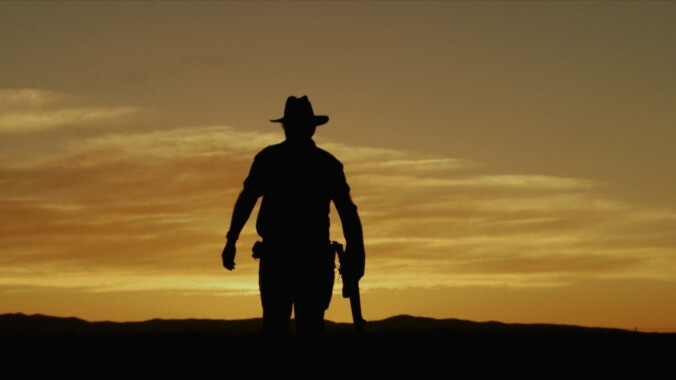
Countless hick-horror rampages have been staged in the four decades since Leatherface first fired up his trusty power tool, but how many have matched The Texas Chain Saw Massacre for pure, white-knuckle intensity? Wolf Creek comes alarmingly close. Greg McLean’s pitiless Aussie shocker sends a trio of attractive, uncommonly likable twentysomethings into the outer reaches of the Outback, where they’re set upon by a smiling psychopath in a Crocodile Dundee hat. One of a small handful of films to ever earn a straight “F” from CinemaScore voters, Wolf Creek has proven just a little too sadistic for plenty of viewers. But there’s an unlikely elegance to its construction, McLean engendering affection for his sacrificial lambs in the long, tension-building hour before they’re led to the slaughter. Unfairly lumped in with the likes of Saw and Hostel, this backwoods gauntlet owes its nightmarish power not just to the “charms” of its cackling human monster (John Jarratt), but also to the unforgiving sprawl of the Australian wilderness. [A.A. Dowd]Available to stream for free on and VUDU, to rent on , , , and
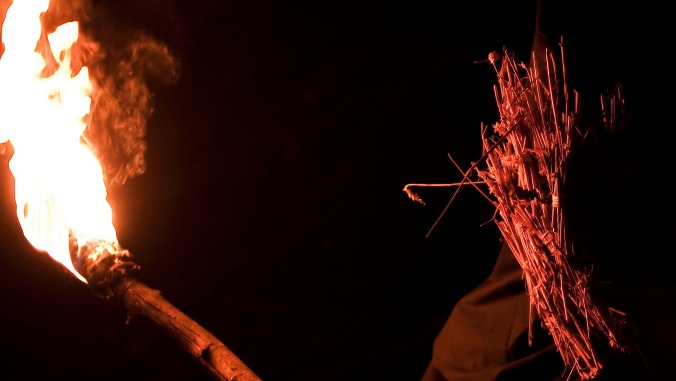
The scene from Kill List that most stays in your head is the one where a man gets his head bashed all the way in: Wielding a hammer, hit man Jay (Neil Maskell) rearranges the kneecaps of a snuff-film purveyor, before finally swinging away at his skull. This is the second of three contract killings that form the black heart of British director Ben Wheatley’s one-of-a-kind feature, so of course there’s no shortage of blood here. But this chimera of a film—part naturalistic marital scream-fest, part on-assignment buddy movie, and, most important for our purposes here, part sticks-and-stones conclave in the Wicker Man mode—is most remarkable for its atmosphere of slow-building menace. Paring down the exposition, Wheatley keeps the audience aligned with his in-the-dark hired guns, though every dread-filled frame cries that something’s amiss. Lo and behold, it emerges that what they’ve taken on is, almost literally, the job from hell. [Benjamin Mercer]Available to stream on and to rent on , , , and
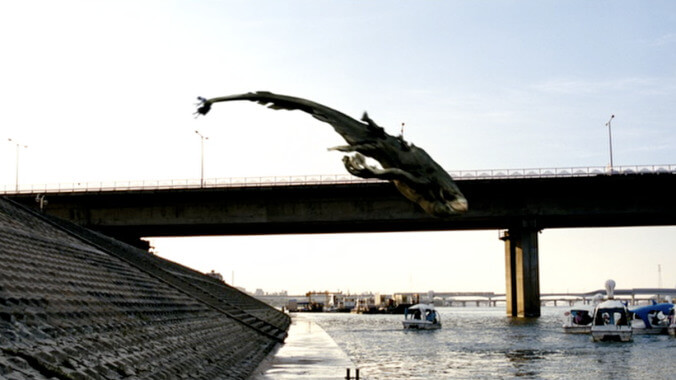
Elements of horror, comedy, melodrama, action, agitprop, and several other genres intermingle in Bong Joon-ho’s crazy-quilt creature feature, about an enormous amphibious mutant that suddenly crawls out of Seoul’s Han River one day. In some respects, The Host is Bong’s version of a Godzilla movie; in particular, it boasts a similar origin story, with the monster accidentally created by an American military advisor who cuts corners by pouring 200 bottles of expired formaldehyde down the drain. In lieu of the lumbering beasts familiar from Japanese monster movies, however, Bong and his effects team fashioned a slimy, fast-moving fish with legs, able to wreak havoc on a smaller, more thrilling scale. And yet it’s arguably the least of the hero’s problems, given the outrageous institutional negligence and incompetence on display throughout the movie. Come for the virtuosic mayhem, stay for the bitter political commentary. [Mike D’Angelo]Available to stream and and to rent on , , and
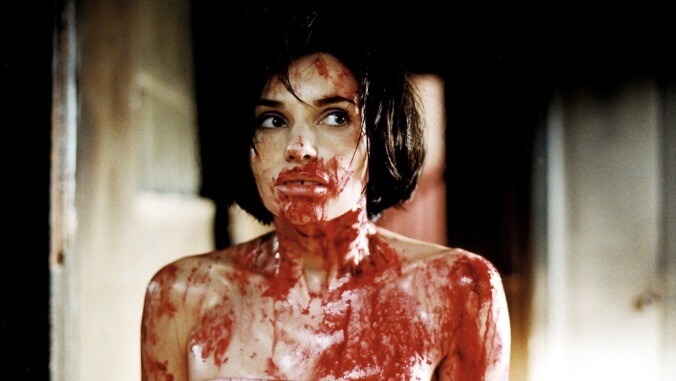
When Claire Denis followed up her lyrical with Trouble Every Day, many critics were disappointed, if not disturbed. Here was an emerging auteur seemingly turning from a serene arthouse aesthetic to make a blood-soaked tale of quasi-cannibals in Paris. Trouble, however, fits neatly into Denis’ preoccupations with examining the limits of human relations. She takes a honeymoon story and plunges it into depravity, uncannily capturing the beauty of dark corners. The film is at times appalling (an act of cuniligus turns carnivorous) but it’s no shock-and-awe ploy. The discomfort that lingers at the end doesn’t just stem from what’s seen on screen but from the all-too human question the film poses: What does it mean to be consumed by desire? [Kiva Reardon]Available to stream on and to rent from
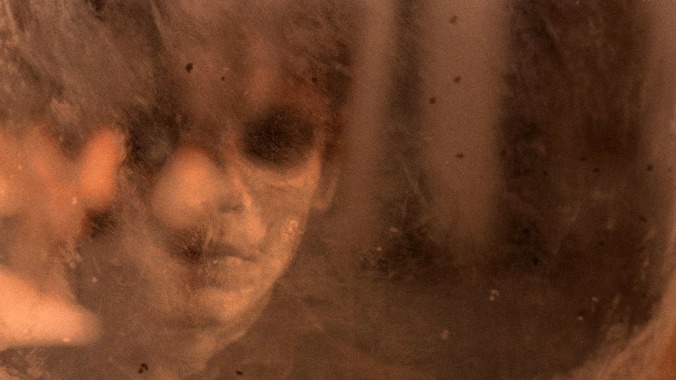
Guillermo Del Toro has never struggled with creating striking visuals, but few of his movies carry the emotional weight of The Devil’s Backbone. Set in an orphanage during the Spanish Civil War, the story ostensibly revolves around a young boy’s attempts to uncover the mystery of the ghost of another child. But even without the specter of a drowned boy skulking the hallways, the whole movie is permeated with dread and the potential for violence. The orphanage is remote and isolated, appearing more as a mausoleum than a refuge. An arid wind blows through every scene, hinting at the inevitable arrival of the war. And despite the Catholic idols that dot the compound, none can overshadow the place’s true patron saint: a massive, diffused bomb that sits in the middle of the courtyard. Del Toro continued his wartime exploration of the tension between fantasy and reality in . But the intimacy and fatalistic sadness of The Devil’s Backbone remains unique. [Nick Wanserski]Available to stream on and to rent on , , , and
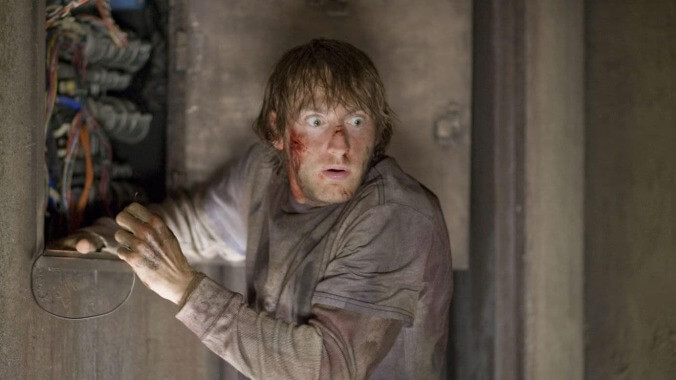
The horror genre has been spoofed easily and often, but rarely all that well; for every Scream, there’s a Scary Movie that ignores its ostensible target’s already-present sense of humor. The Cabin In The Woods lands closer to the Scream end of the spectrum in that it’s both of and about its genre. Director/co-writer Drew Goddard and co-writer Joss Whedon call out plenty of horror-movie tropes (threatened characters inexplicably splitting up; stereotypical teenagers; a creepy gas station attendant) without subjecting them to snide derision. The movie accumulates clichés and touchstones until it twists itself into a full-on monster mash, arguably geekier than the Scream series. Cabin isn’t the most terrifying recent horror film, but the big, delighted laughs it generates don’t drown out an appropriately doomy conceit that refuses to pull any punches in the end. As with a lot of Whedon’s work, its snark is deeply felt. [Jesse Hassenger]Available to stream on , and to rent on , , , and

Long before web-phobia became a cliché, Kiyoshi Kurosawa’s Pulse painted a haunting portrait of the way our technological devices—and internet-aided interconnectivity—foster greater individual and societal isolation. It does this via a beguiling ghost story in which a strange plague of supernatural misfortunes spread throughout Tokyo like a (computer) virus. Missing friends, mysterious rooms sealed with red duct tape, an ominous website that depicts fuzzy specters moving about their homes—all are part of Kurosawa’s melancholy tapestry of communication breakdowns. Employing medium and long shots, extended takes, and disquieting silence, the director uses his genre material for a chilling investigation of modern disaffection and, specifically, the soul-crushing misery of a world devoid of person-to-person interactions. Avoiding jolt scares for an all-encompassing mood of apocalyptic estrangement, it’s a film that taps into an unnerving, unforgettable strain of existential despair. [Nick Schager]Available to stream on and , and to rent on , , and
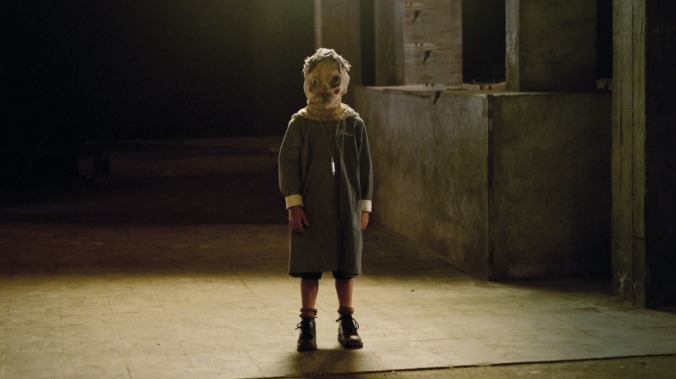
The Spanish film The Orphanage is terrifying largely because of where it draws the line between real-life tragedy and the supernatural. A woman, Laura, returns to the orphanage where she grew up, intending to transform bad memories into something positive by opening a home for disabled children there. But her own son, Simón, befriends little Tomás, a specter in that scariest of scary-movie outfits, the sack mask. (His first appearance, just standing there, is blood-draining.) When Simón goes missing, it’s unclear whether it’s from corporeal or earthly causes—and either scenario would be enough to drive a mom to desperation. Laura searches for answers in both directions, and in a particularly haunting scene, she plays a game in which she encourages a room full of ghost children to sneak up behind her. It’s two minutes long but feels like a hundred years, in the best way. [Josh Modell]Available to rent on , , , , and
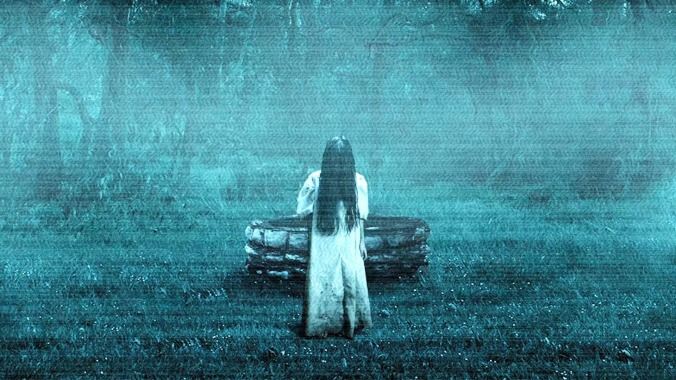
Japanese horror had a profound influence on genre filmmakers and fans in the early years of the 21st century, leading Hollywood to respond the only way it knew how: by pumping out a slew of misguided remakes. Of course, every trend produces an exception—which, in this case, happens to be the movie that kicked it all off. With its urban-legend premise (watch a mysterious VHS tape, die within a week), perpetually overcast Pacific Northwest backdrop, and meticulously cold color scheme, Gore Verbinski’s remake of is an exercise in horror atmospherics, Hollywood-style. In lieu of gore, The Ring offers a careful balance of immediate and abstract threats—with the spooked horse that leaps to its death in the propellers of a ferry falling somewhere squarely between the two. [Ignatiy Vishnevetsky]Available to stream on and and to rent on , , , and
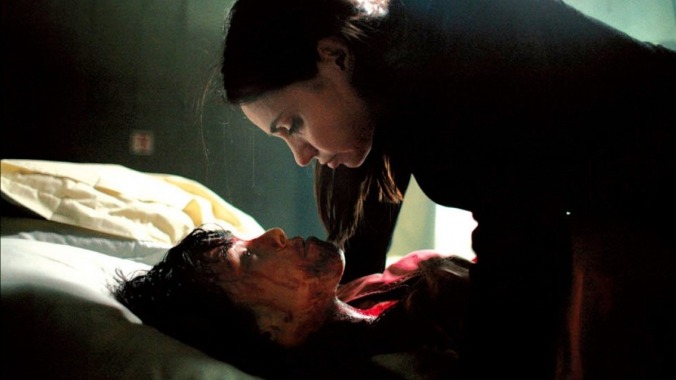
A car wreck leaves pregnant photojournalist Sarah (Alysson Paradis) without a husband. Four months later, on the night before Christmas, Sarah holes up in her home, waiting to deliver her baby the following morning. “Enjoy your last night of peace and quiet,” her doctor tells her. Far from it: A shadow figure cloaked in black (credited as “La Femme” and played by the otherworldly Béatrice Dalle, from Trouble Every Day) arrives on the premises with the intention of stealing the fetus. Dalle uses an arsenal of sharp objects—including some gruesomely oversized scissors, which she inserts into Sarah’s belly button in close-up—to slice and dice whoever and whatever gets in her way. By the end of the movie, enough gore has accumulated to fill the elevator from The Shining, and CGI-assisted images of the baby writhing in pain will have sent squeamish viewers running for the door. But there’s real discipline to the approach of co-directors Alexandre Bustillo and Julien Maury: The considerable duration of the shots prolongs the sensation of dread to the point where the silent, mysterious, darkly lit lapses between the bloody eruptions are perhaps what terrify the most. [Danny King]Available to stream on and to rent on , , and

Most horror is metaphor, but Let The Right One In expresses its central themes with particular eloquence. Leading a wave of sensitive, intelligent Scandinavian horror movies that have become a subgenre in their own right, Tomas Alfredson’s coming-of-age vampire tale traveled far outside its native Sweden by evoking both pity and terror in audiences. Re-imagining the seductive figure of the vampire as an odd little girl, this horror-romance hybrid focuses on the relationship between bullied 12-year-old Oskar and his enigmatic new neighbor Eli, which grows more dangerous as the two misunderstood creatures grow closer. Unfolding in a chilly concrete apartment block in the suburbs of Stockholm, the film takes a quiet, restrained approach to a story punctuated by moments of bloody violence, building to a dark climax that could be read as wish fulfillment and a haunting final image. [Katie Rife]Available to stream on , , , and and to rent on and
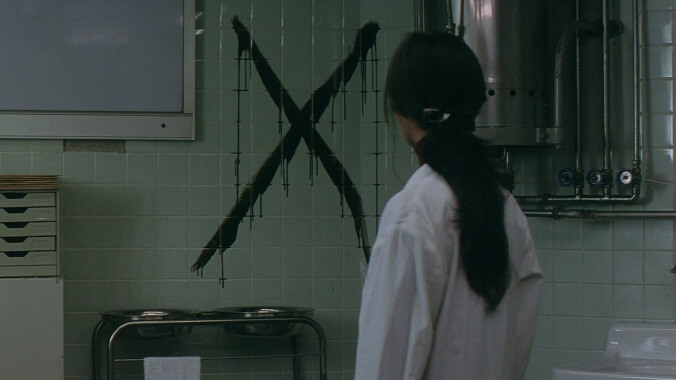
When the profoundly unsettling Cure hit American screens in 2001, it announced Kiyoshi Kurosawa as the most original horror stylist since John Carpenter—something of a surprise, given that the previously obscure Japanese director had been making movies for over two decades. Drawing equally on serial killer procedurals, weird fiction, and Fritz Lang, Kurosawa’s breakthrough follows a homicide detective (Kōji Yakusho) as he investigates a series of ostensibly unrelated murders (different perpetrators, different methods) orchestrated by a sinister unknown. Ditching shock cuts and crescendos in favor of ambiguous ellipses and creepy wide shots, Cure teaches the viewer to fear empty spaces and unfamiliar gestures—a hypnotic effect that goes hand-in-hand with the movie’s conception of the transference of evil. Few movies are so purely scary. [Ignatiy Vishnevetsky]Available to stream on
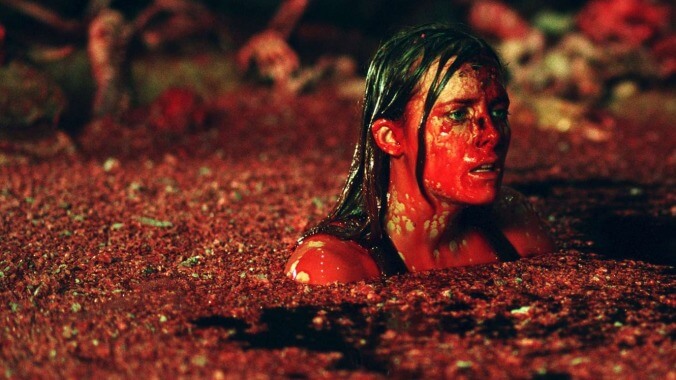
The most effective horror films use emotional turmoil as a backdrop for genre tropes, and few recent films do this more effectively than Neil Marshall’s The Descent, which elegantly combines grief and claustrophobia with the fear of being eaten alive by preternatural monsters. The Descent terrifies even the most hardened horror fans because they can relate to the characters, a sextet of fearless female spelunkers too hubristic to fear the unknown. They rappel into a subterranean cave system—just the latest of their death-defying girlfriend getaways—only for their friendships to fracture after a series of mishaps leaves them trapped without hope of rescue. Marshall builds the relationships and ratchets up the dread so effectively, it’s easy to forget it’s supposed to be a monster movie. By the time the pale, razor-toothed foes show up, Marshall is gilding the lily. It’s scary enough watching the friendships dissolve as the women are sealed inside a coffin of rocks. [Joshua Alston]Available to stream on , , and and to rent on , , , and
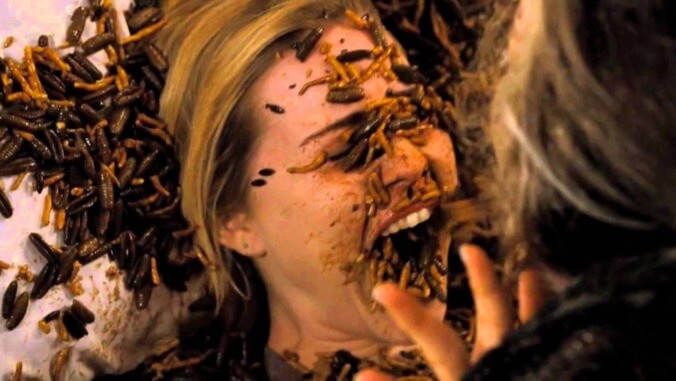
A celebrated horror director returning to their former wheelhouse doesn’t always work out the way it’s intended. (Sorry, .) But it worked beautifully for director Sam Raimi, whose Drag Me To Hell was widely—and rightly—celebrated as a return to form upon its release in 2009. Produced from a script he and his brother Ivan Raimi wrote in the early ’90s, Drag Me To Hell takes a more serious approach than Raimi’s Evil Dead trilogy (although most anything could be considered more serious than the Evil Dead trilogy). Still, Raimi’s cartoon sensibility can’t help but bleed through, especially in the special-effects sequences, and he shamelessly uses every trick in the horror director’s book, including loud sound effects, kinetic camera work, jump scares, and a variety of gross-out sequences involving blood, vomit, and even embalming fluid. The result is pure popcorn entertainment, a pulpy tale of Gypsy curses and demonic possession in sunny Southern California that highlights Raimi’s strengths. [Katie Rife]Available to stream on and to rent on , , , , or
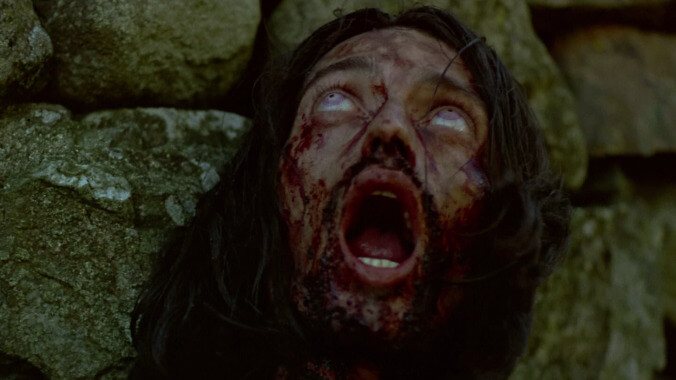
Danny Boyle jumpstarted both his terrific ’00s run and the undead revival with a concept that vexed some hardcore horror devotees: fast zombies. Far from anti-Romero sacrilege, though, this creative choice shifts the undead metaphor from shuffling, decaying remnants of society to a raw, untamed rage, here the result of a fast-spreading virus, another tweak of the established zombie formula. The title comes from the amount of time elapsed between the virus’s inception and the ravaged world that Cillian Murphy’s character discovers when he wakes up from a coma in an abandoned hospital—a terrific nightmare hook that wrings initial terror from scenes of deadly quiet. Appropriately, Boyle shot fast and furious with digital video to capture beautiful lo-fi visions of a post-apocalyptic London and beyond. Horror overtones echo throughout Boyle’s career, from Shallow Grave and Trainspotting to Sunshine and 127 Hours; in 28 Days Later, his talent for intensity boiling over into insanity comes through as loud and clear as it ever has. [Jesse Hassenger]Available to stream on and to rent on , , , , or
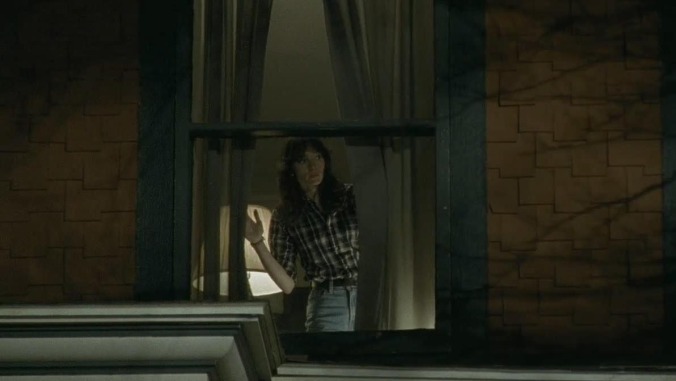
For long stretches in Ti West’s hypnotic horror film The House Of The Devil, very little happens beyond a resourceful babysitter coping as best she can with a very strange assignment, one where there is no actual baby to be cared for. That a world-class creep played by the world-class creepy Tom Noonan is the one giving her the curious gig is plenty of proof that spookery and evil deeds are afoot. But West does a brilliant job of drawing out suspense, infusing each scene and moment with a sense of creeping dread. It’s a deliberate throwback to the low-budget, deliberately paced horror movies of the late 1970s and early 1980s. From the font employed in the opening credits to the filmmakers’ decision to release the movie on VHS long after the medium had died, The House Of The Devil illustrates West’s devotion to getting the details perfectly right, both in the film itself and in the way it was marketed. He doesn’t just honor his oft-disreputable inspirations. In many ways, he tops them. [Nathan Rabin]Available to stream on , , and , and to rent on , , or
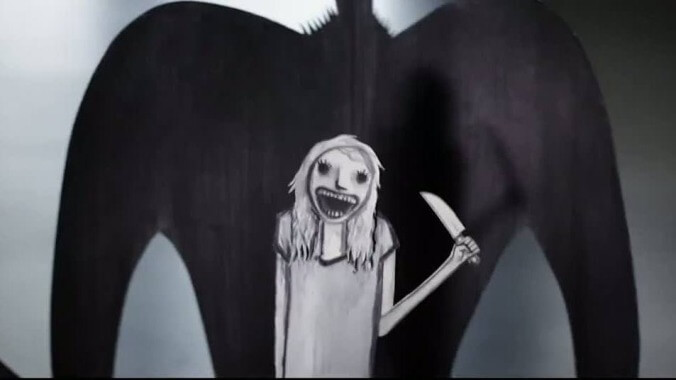
Jennifer Kent’s harrowing haunted-house picture cranks up the genre’s usual “eerie shadows and strange noises” until they become almost unbearably intense—and does so in the movie’s first half-hour, too, rather than waiting for the climax. But The Babadook is just as nerve-jangling as a family drama, with the astounding Essie Davis playing a sleepless young widow named Amelia who can’t find anyone to help with her monster-obsessed, emotionally disturbed 6-year-old son, Samuel. The scares kick in early, when Sam has his mom read a prescient pop-up book about a looming creature that they then “can’t get rid of.” Really, though, Amelia’s been dealing with demons since before the opening credits: haunted by guilt over surviving her husband, and sick with worry that their weird child will be a burden to someone for the rest of his life. This is a deeply unsettling film about what happens to horror movie victims when they don’t die, but can’t escape. [Noel Murray]Available to stream on , and to rent on , , , , or
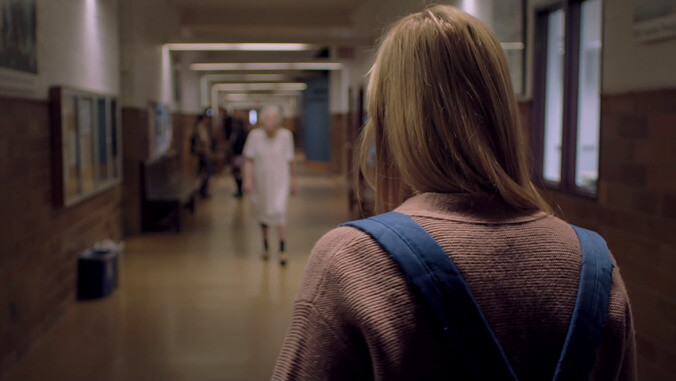
Is it too soon to call It Follows one of the great horror movies of the new millennium? Though it crept into theaters just a few months ago, David Robert Mitchell’s fledgling fright flick already feels like a classic of the genre, something we’ll be watching between fingers for years to come. Part of that is a deliberate timelessness: Beyond fashionable nods to the widescreen touchstones of John Carpenter (including a terrific throwback synth score), there’s almost nothing about the film, or its vaguely retro Michigan setting, that could betray it as a product of our here and now. Furthermore, Mitchell exploits his brilliantly simple premise—a supernatural spin on that irrational feeling that someone is right behind you, getting closer with every step—through the kind of formal ingenuity that never goes out of style, using offscreen and background space to score big scares. It Follows may be brand new, but it works in the primal manner of something much older, like a revered Halloween staple or an urban legend passed down through the ages. [A.A. Dowd]Available to stream on and , and to rent on , , and
GET A.V.CLUB RIGHT IN YOUR INBOX
Pop culture obsessives writing for the pop culture obsessed.